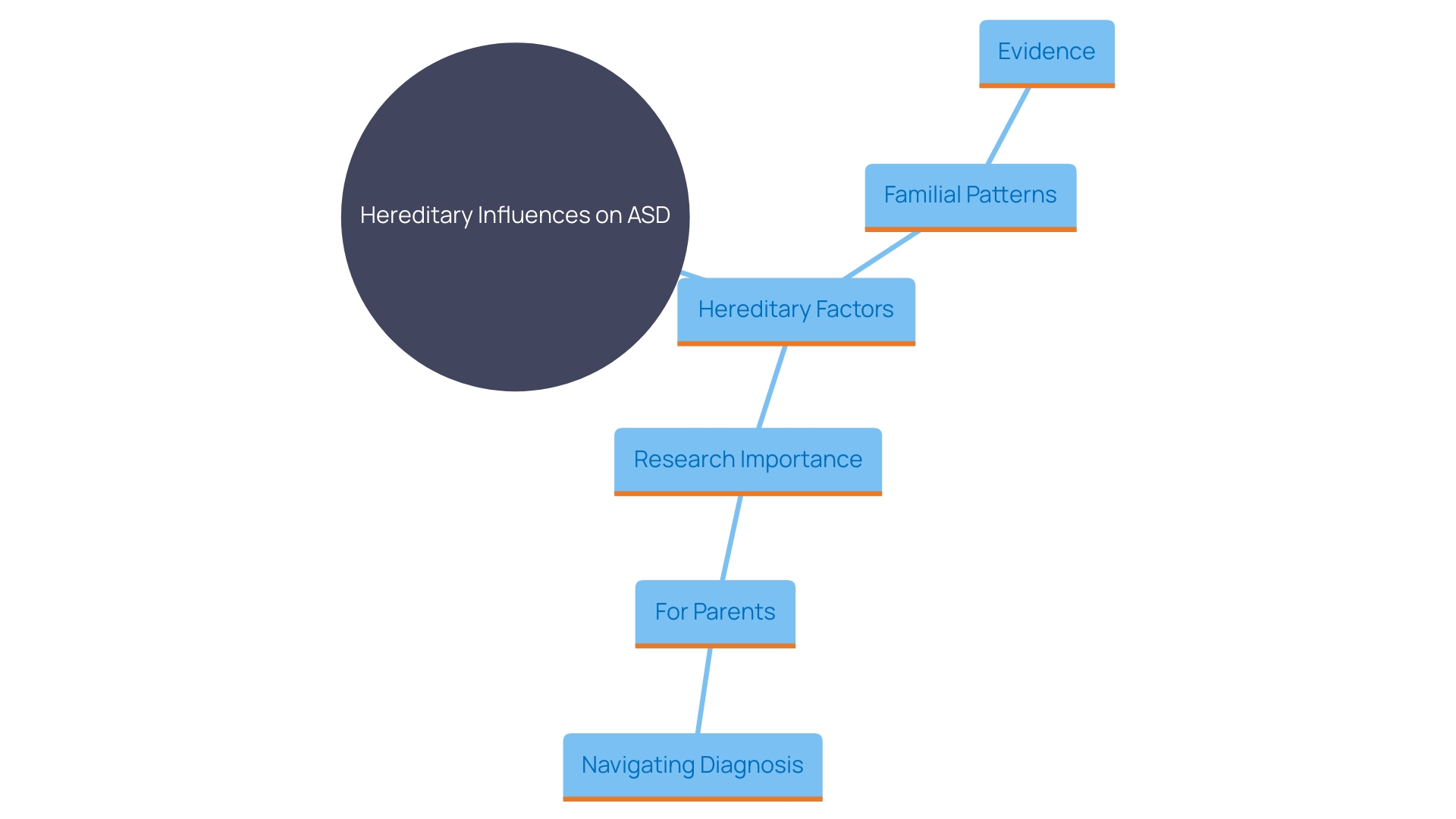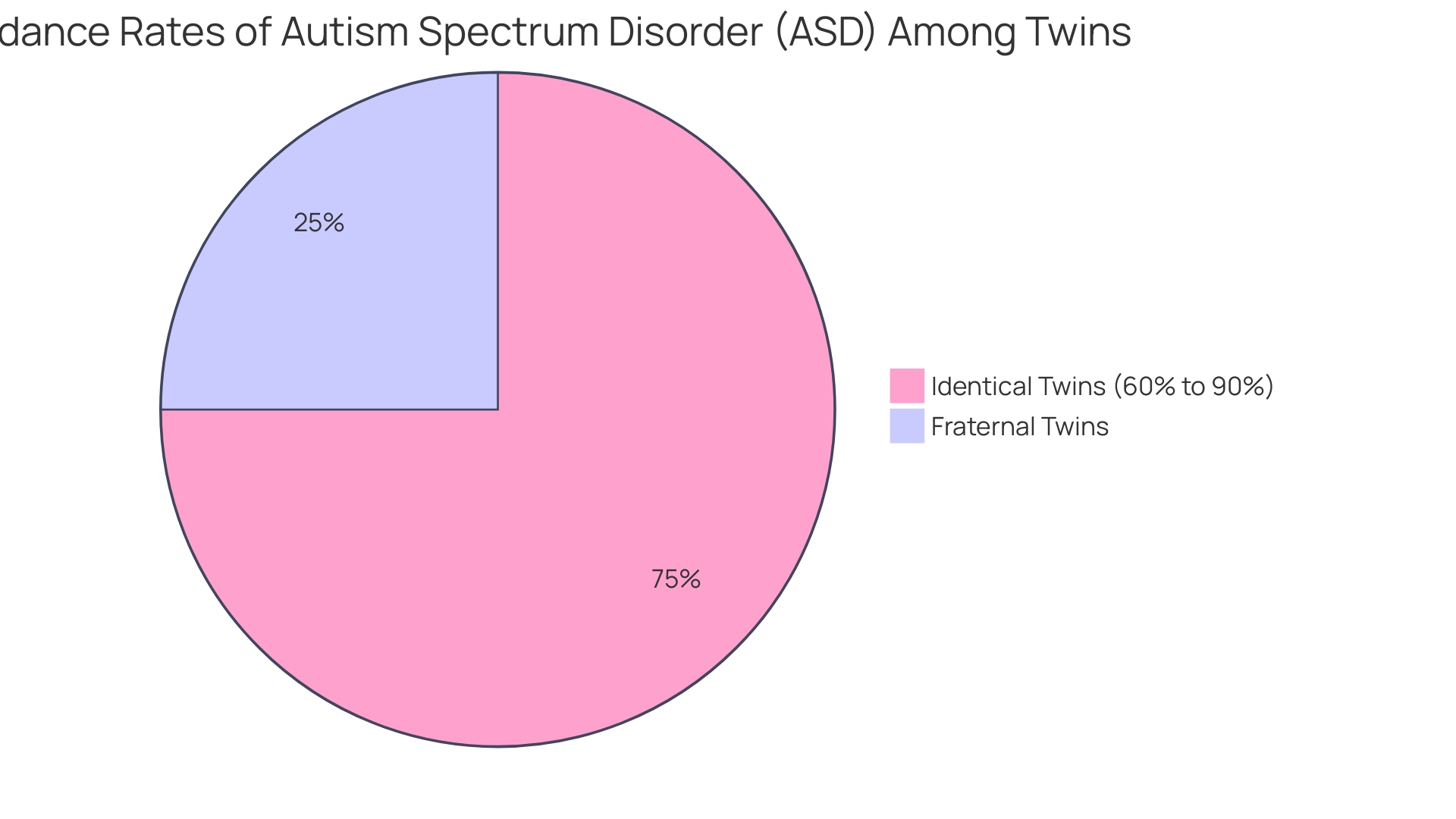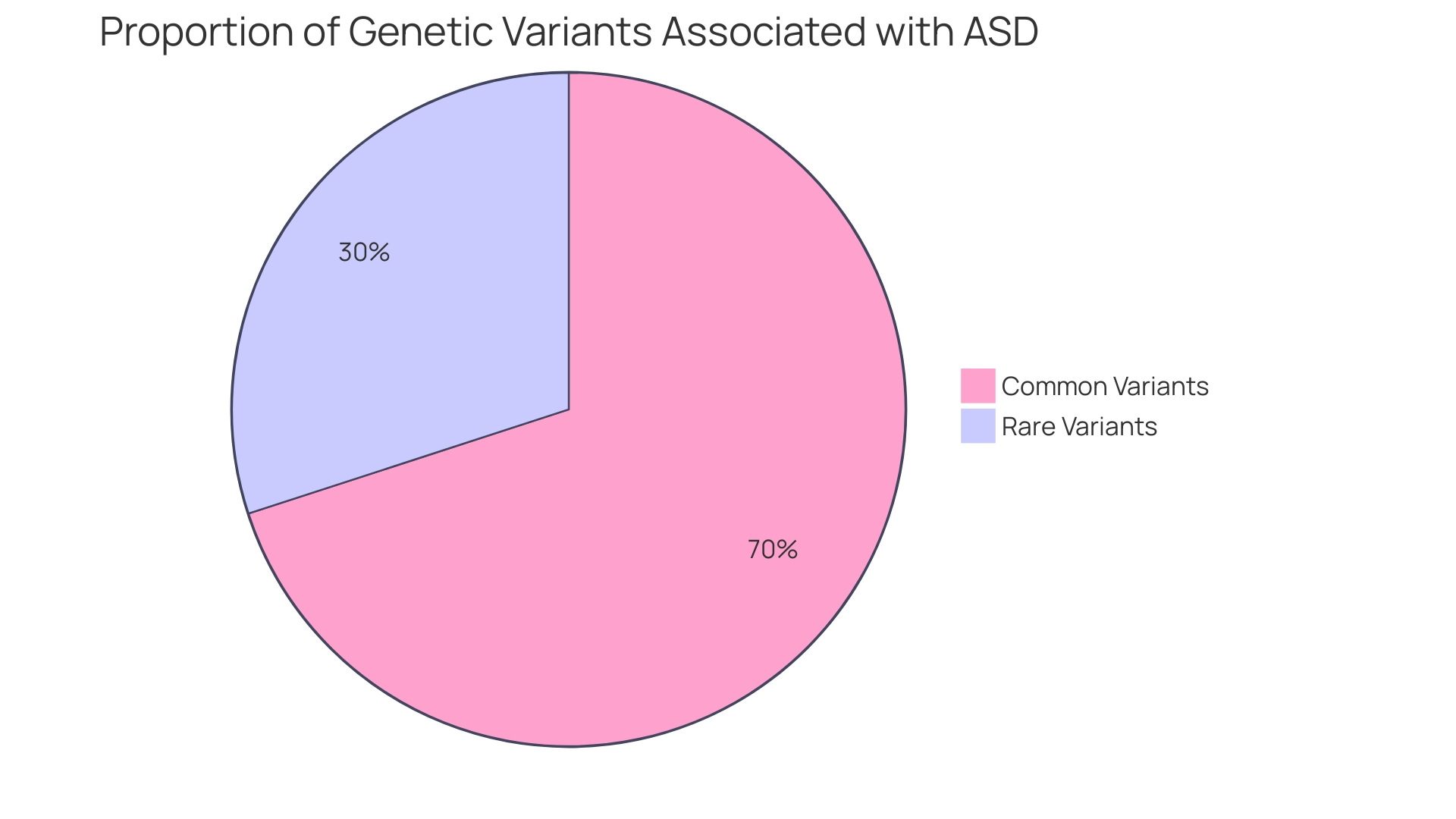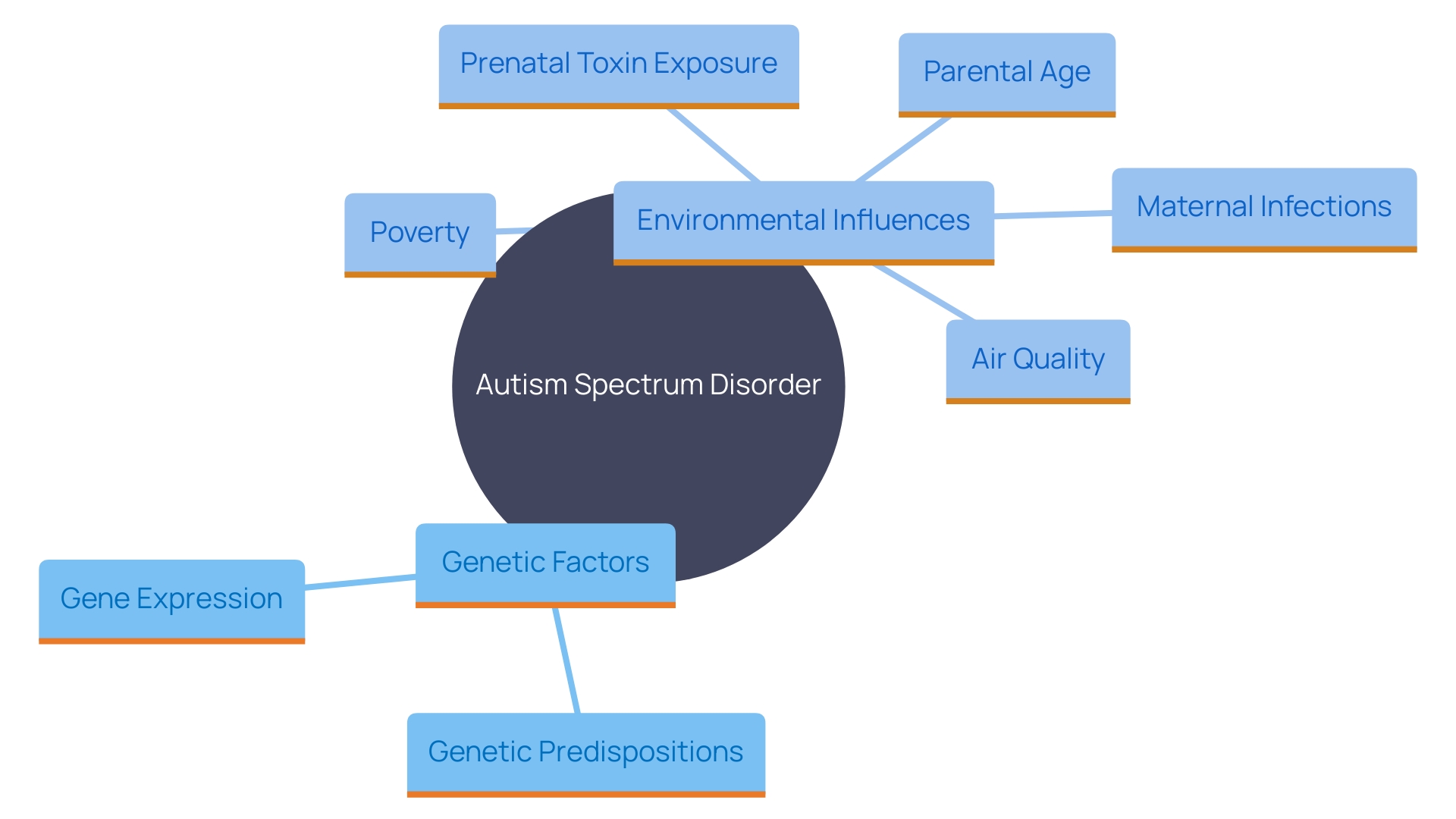Introduction
Autism Spectrum Disorder (ASD) is a multifaceted condition with roots that extend deep into genetic and environmental influences. Recent research underscores the significant role genetics play in ASD, with familial patterns and twin studies providing compelling evidence of its heritable nature. Both common and rare genetic variants have been identified, with groundbreaking tools like Genotypes and Phenotypes in Families (GPF) paving the way for new discoveries.
Additionally, environmental factors, from prenatal exposures to socioeconomic conditions, interact intricately with genetic predispositions, further complicating the landscape of autism. For parents navigating an autism diagnosis, understanding these nuanced genetic and environmental interactions is crucial in advocating effectively for their children.
The Role of Genetics in ASD
Autism Spectrum Disorder (ASD) has been extensively studied, with a significant focus on the hereditary factors influencing its development. Studies consistently emphasize that hereditary factors play a major role in an individual's vulnerability to ASD. Familial patterns of the disorder provide strong evidence for its heritable nature. A study approved by the Danish Data Protection Agency highlights the significance of hereditary research, as such studies do not require informed consent due to their reliance on existing data sets. Understanding from hereditary research is essential for parents, as they maneuver through the complex terrain of a developmental disorder diagnosis.

Twin Studies: Evidence for Genetic Contribution
Twin studies have provided significant insights into the genetic underpinnings of Autism Spectrum Disorder (ASD). These studies reveal that identical twins exhibit a notably higher concordance rate for the condition compared to fraternal twins. For instance, research has demonstrated that if one identical twin is diagnosed with autism, the likelihood of the other twin also receiving a diagnosis ranges between 60% and 90%. This substantial difference underscores the profound hereditary factors influencing the development of ASD, highlighting the critical role genes play in its manifestation.

Common and Rare Genetic Variants in ASD
Recent advancements in genomic research have unveiled both common and rare variations associated with Autism Spectrum Disorder (ASD). Common variants, which are found in a significant portion of the population, contribute to a modest increase in risk. In contrast, rare variants can have a more substantial impact on the development of ASD. For instance, alterations in genes like CHD8 and SYNGAP1 have been strongly associated with developmental disorders, emphasizing the complex nature of hereditary influences.
A recent report from the National Institute of Mental Health (NIMH) highlights the significance of uncommon hereditary differences in mental health studies, including developmental disorders. This selected compilation of human genes with notable variants linked to psychiatric disorders seeks to improve the comprehension of the biological foundations of these conditions. The report underscores that while common variations are still under investigation, the focus remains on rare variants due to their pronounced effects.
Moreover, Professor Iossifov from Cold Spring Harbor Laboratory has created a tool named Genotypes and Phenotypes in Families (GPF), which could transform our comprehension of the hereditary origins of neurodevelopmental disorders. This innovation may pave the way for new discoveries and targeted interventions, providing hope for families affected by ASD.

Environmental Factors and Their Interaction with Genetics
Genetics undoubtedly play a critical role in the development of Autism Spectrum Disorder (ASD), but environmental influences are also significant. These elements can engage with genetic tendencies, possibly raising the likelihood of the condition. Prenatal exposure to toxins, maternal infections, and perinatal complications are some examples that can alter gene expression. The complexity of environmental exposures is profound, encompassing elements like pathogen exposure in utero, air quality, poverty, and even parental age. According to experts, “Technologies to understand environment haven’t been able to catch up. You can’t just take a blood sample and decide what all your exposures are.” This highlights the intricate and often transient nature of these factors. The multifaceted interaction between genes and the environment underscores the necessity for a comprehensive approach to understanding autism's origins.

Conclusion
Understanding Autism Spectrum Disorder (ASD) requires a comprehensive exploration of both genetic and environmental factors. The significant role genetics plays in ASD is underscored by familial patterns and twin studies, which reveal a strong heritable nature of the disorder. Identical twins show a much higher concordance rate for autism compared to fraternal twins, emphasizing the profound influence of genetic factors.
Recent research has identified both common and rare genetic variants linked to ASD, with tools like Genotypes and Phenotypes in Families (GPF) promising to enhance understanding and lead to targeted interventions.
Equally important is the recognition of environmental influences that interact with genetic predispositions. Factors such as prenatal exposures, maternal health, and socioeconomic conditions can significantly impact the development of autism. The complexity of these interactions necessitates a nuanced approach, as understanding the interplay between genetics and the environment is crucial for parents navigating an autism diagnosis.
By staying informed about the latest research and developments in both genetic and environmental studies, parents can better advocate for their children. This knowledge empowers them to seek appropriate resources and support, ensuring that their children receive the care and understanding they need to thrive. The journey may be challenging, but with the right information and advocacy, families can foster a supportive environment for their children on the autism spectrum.




